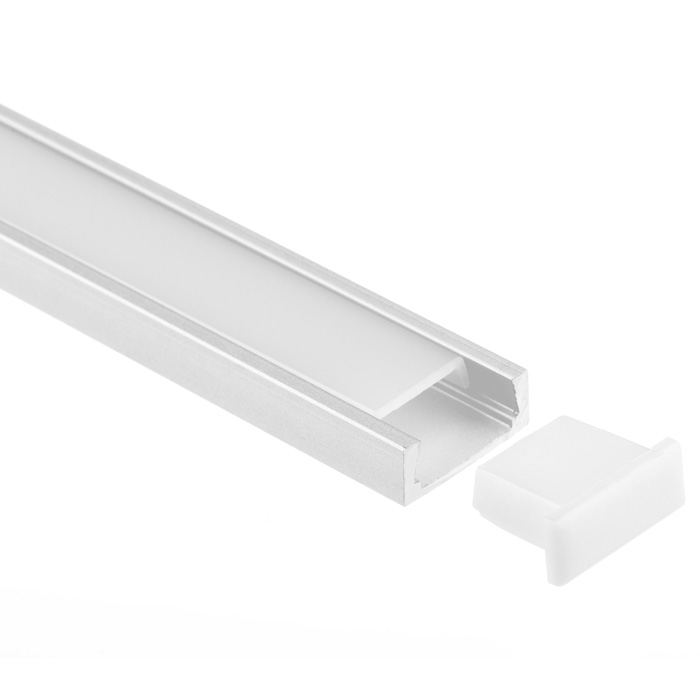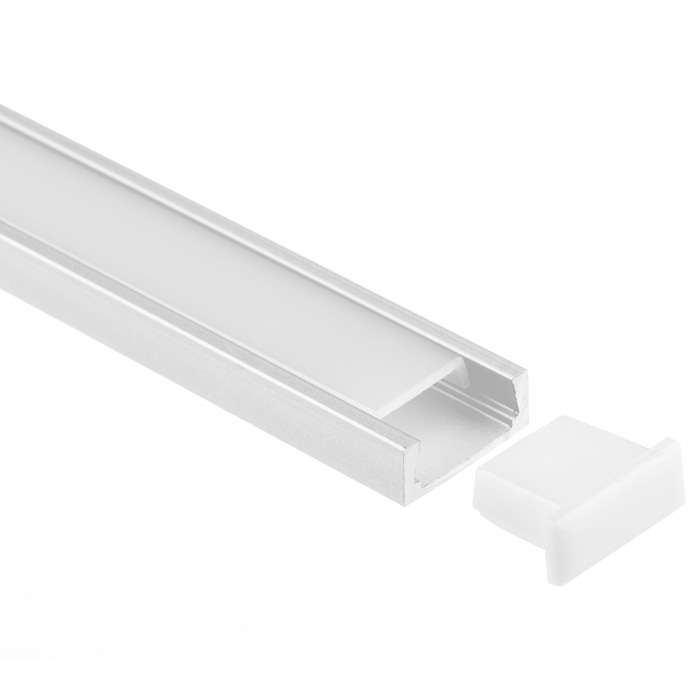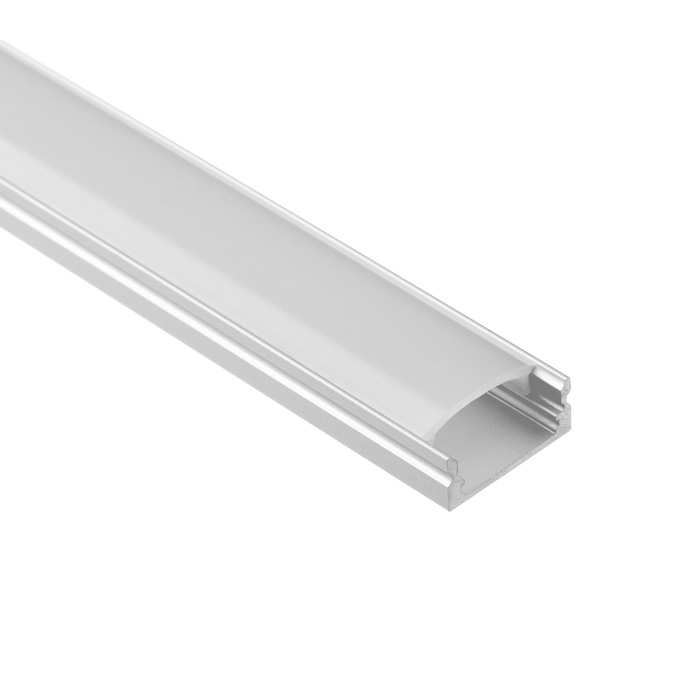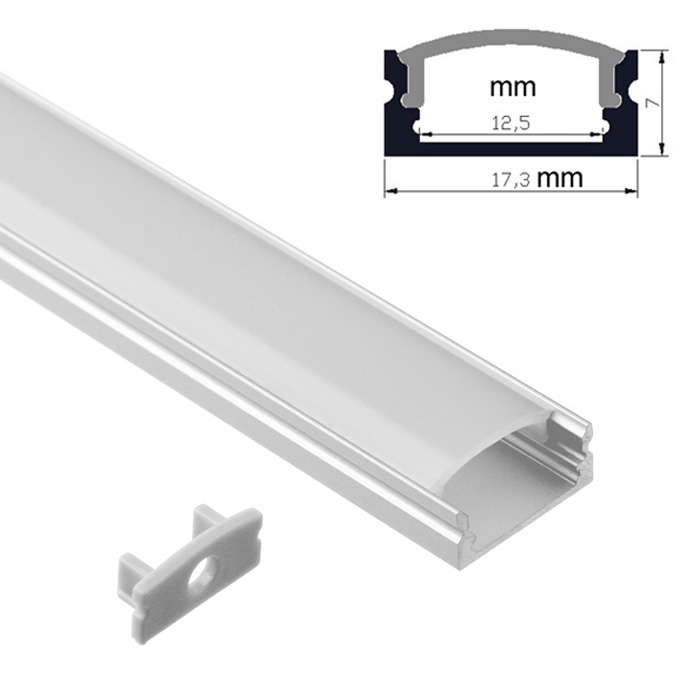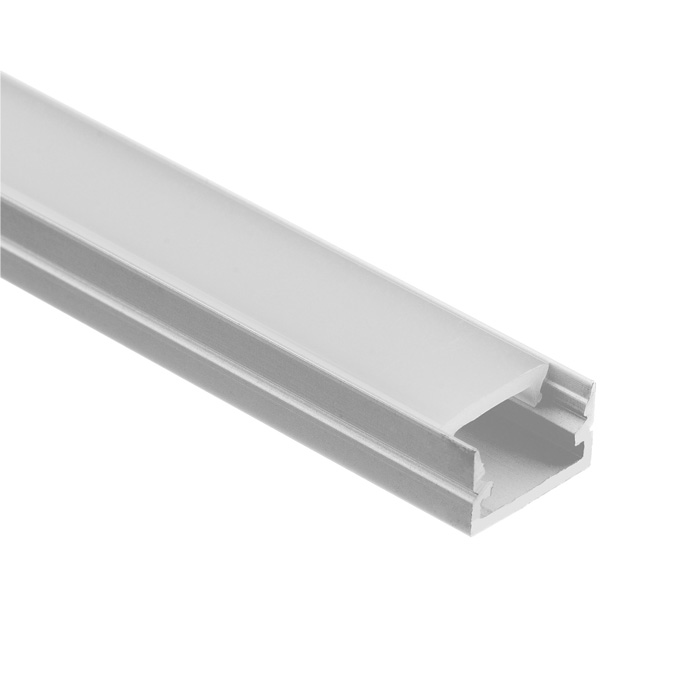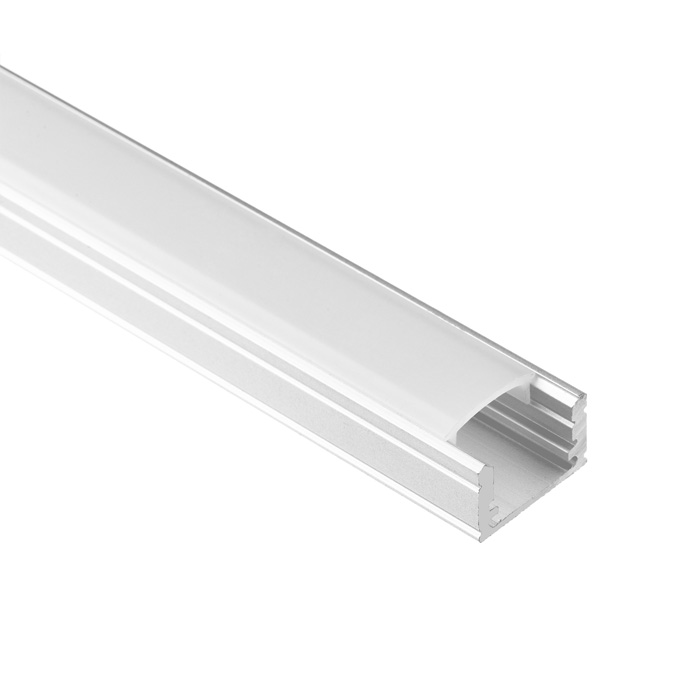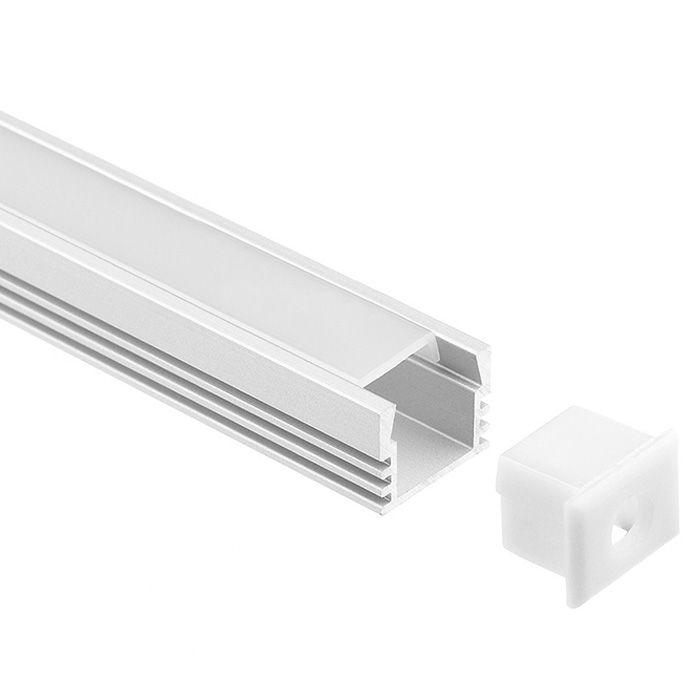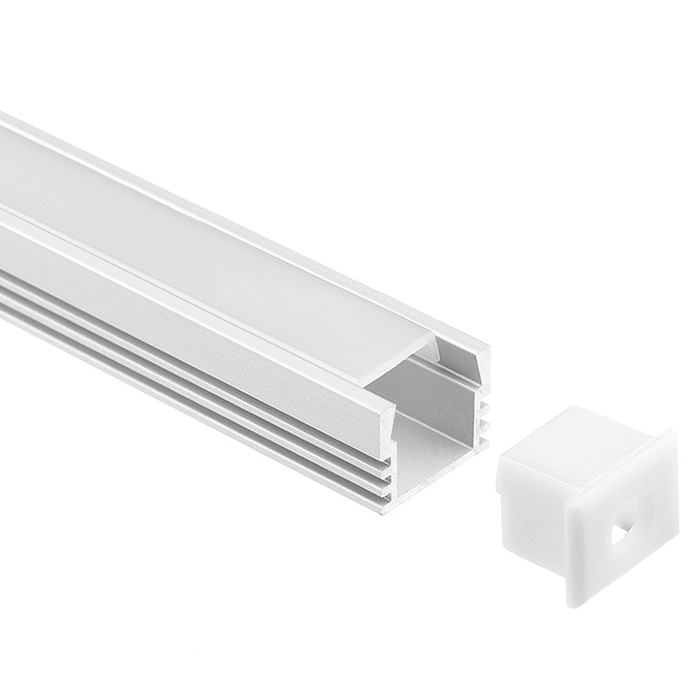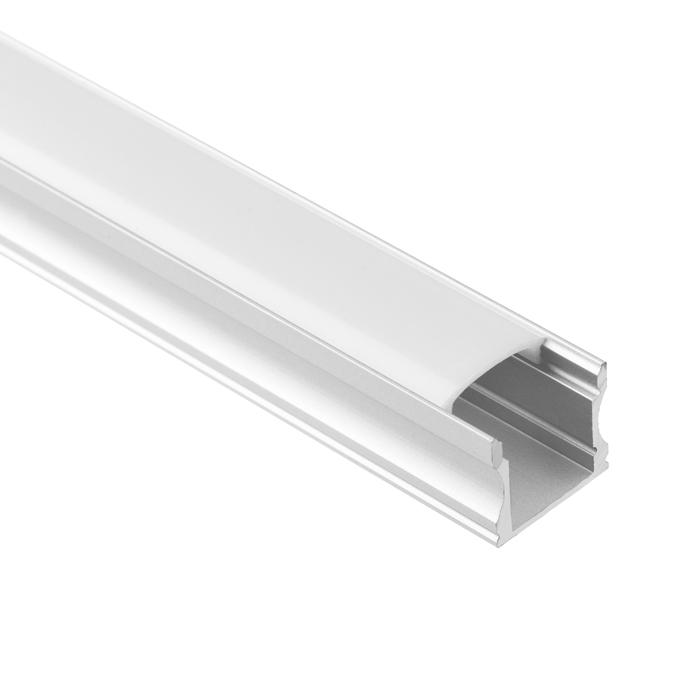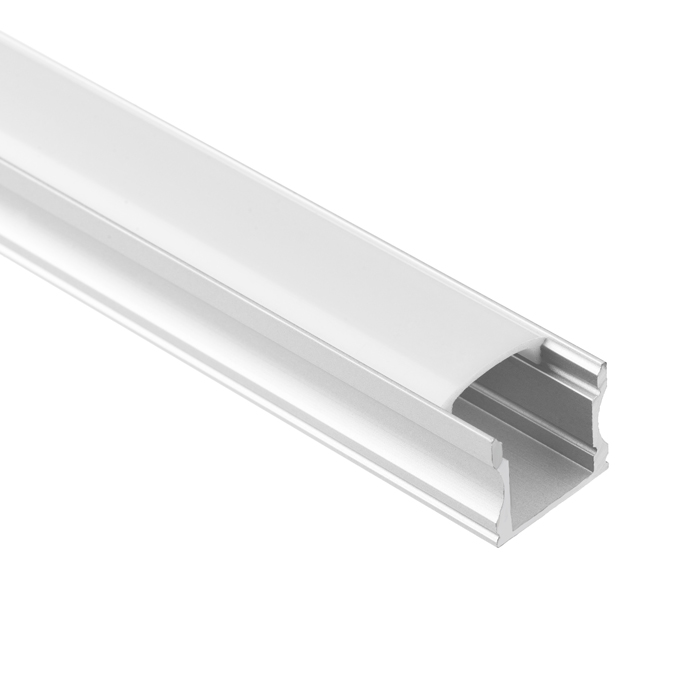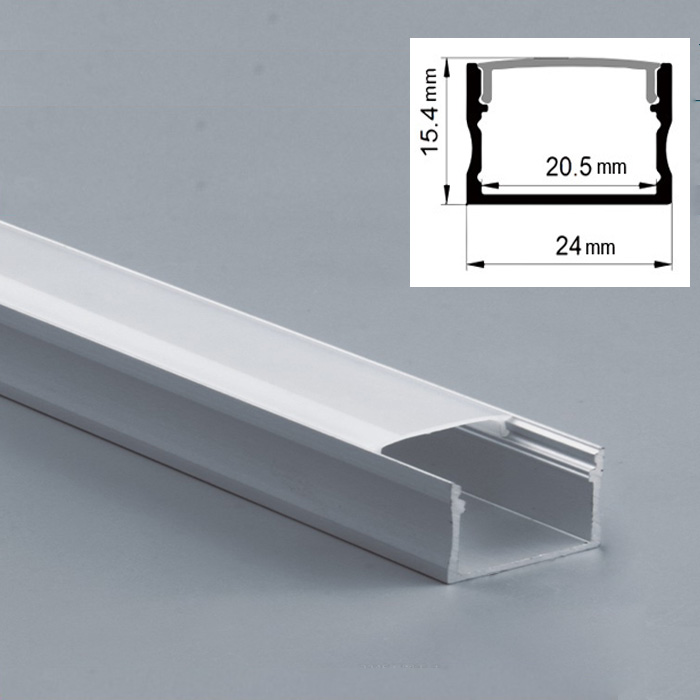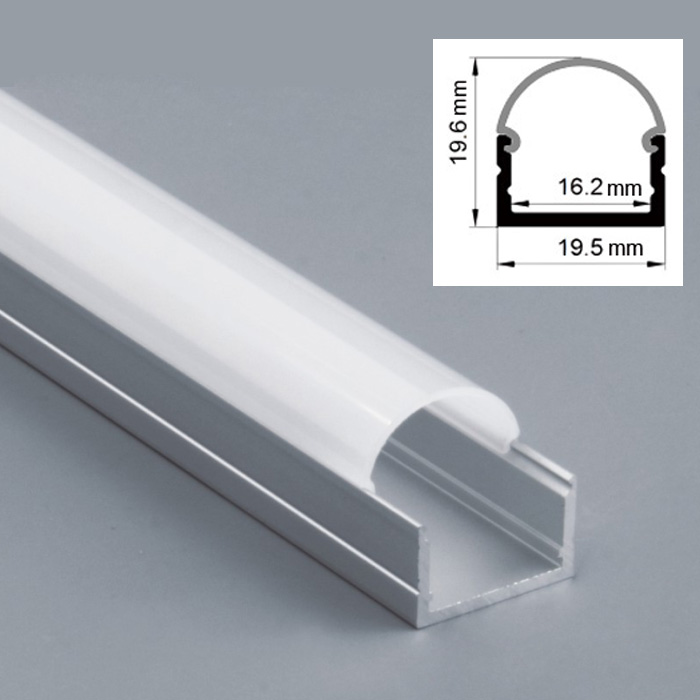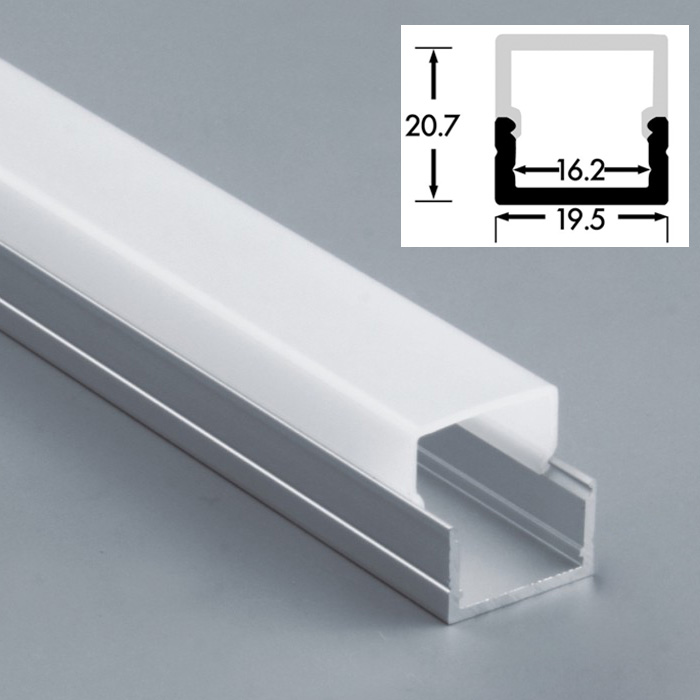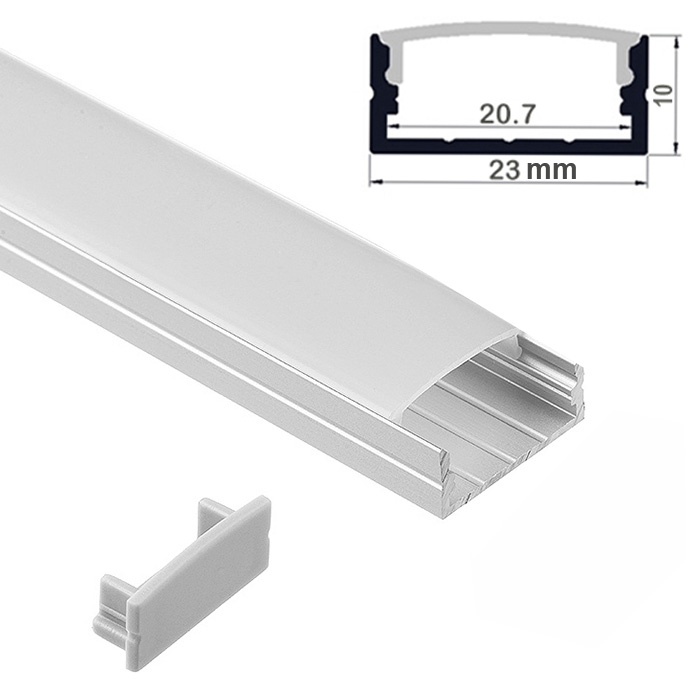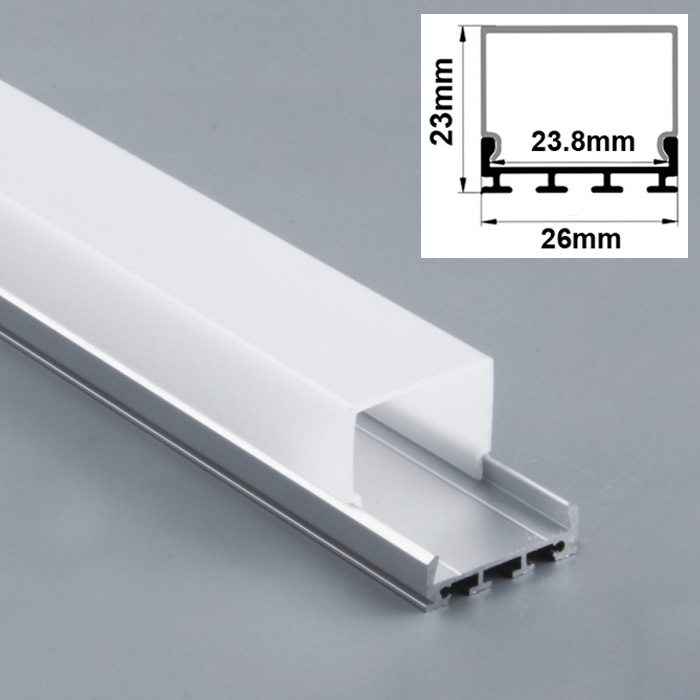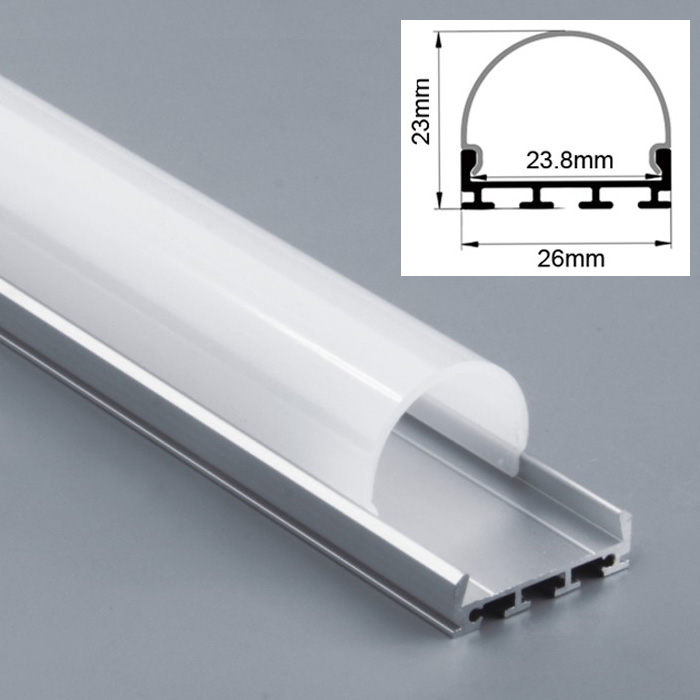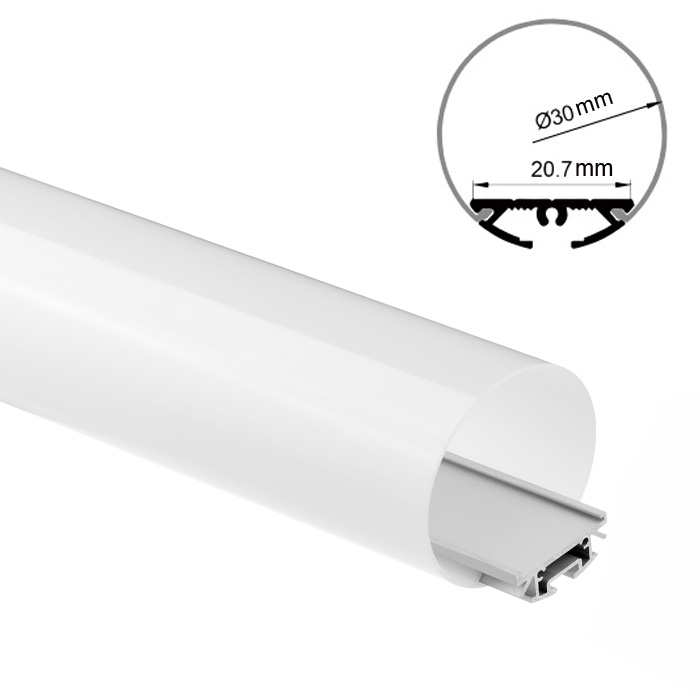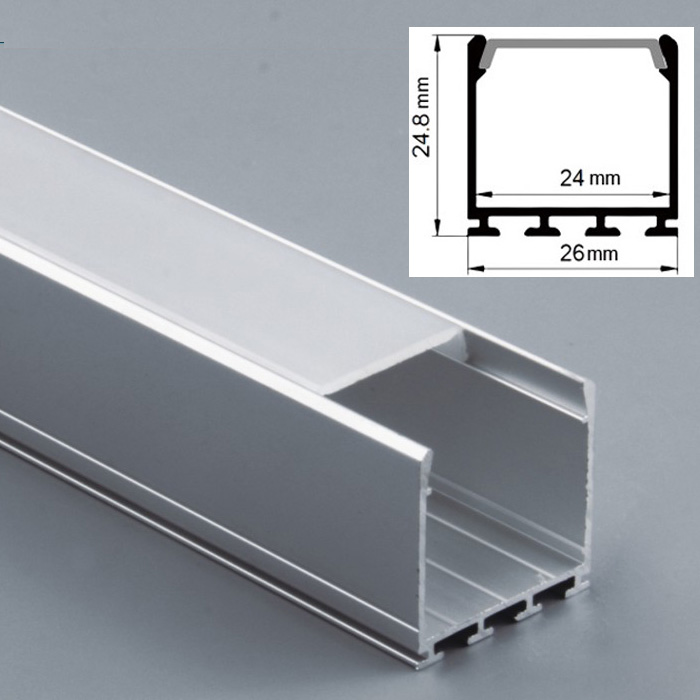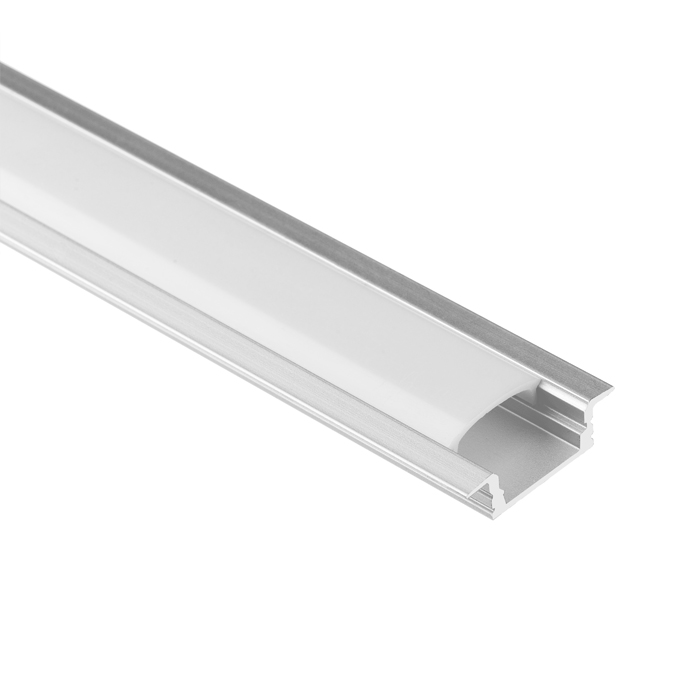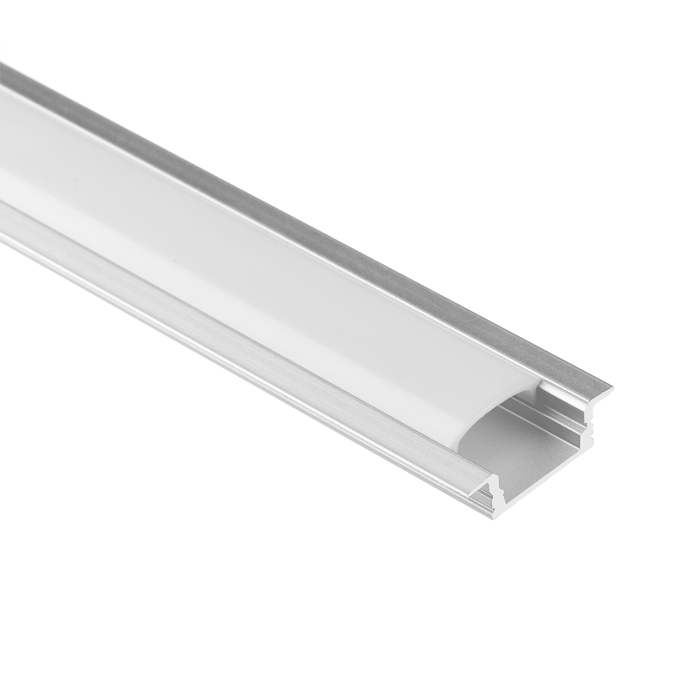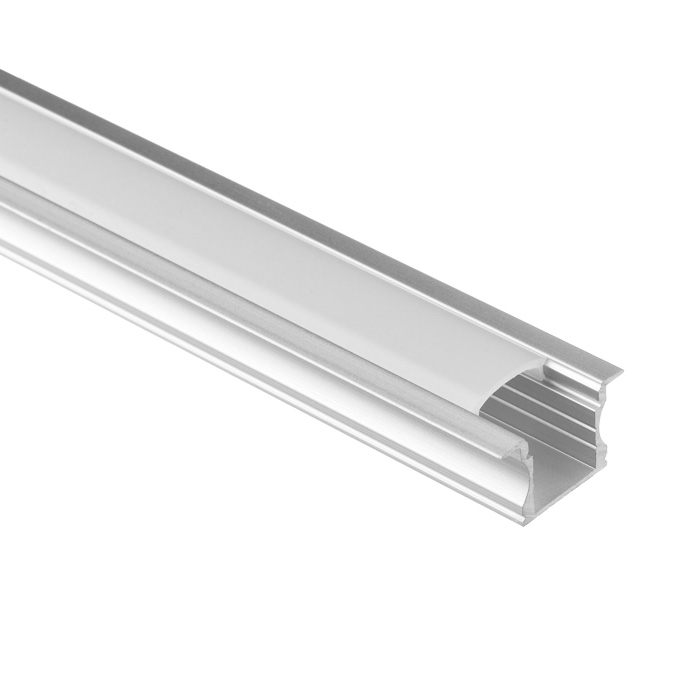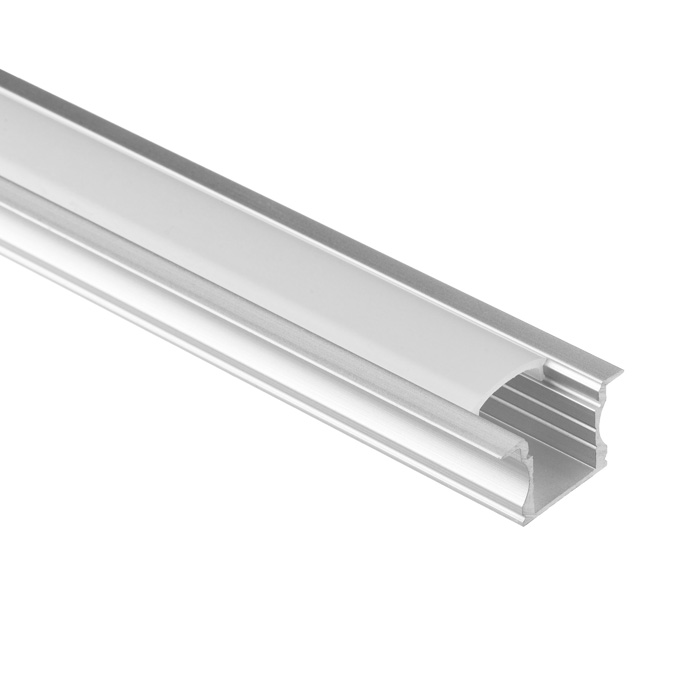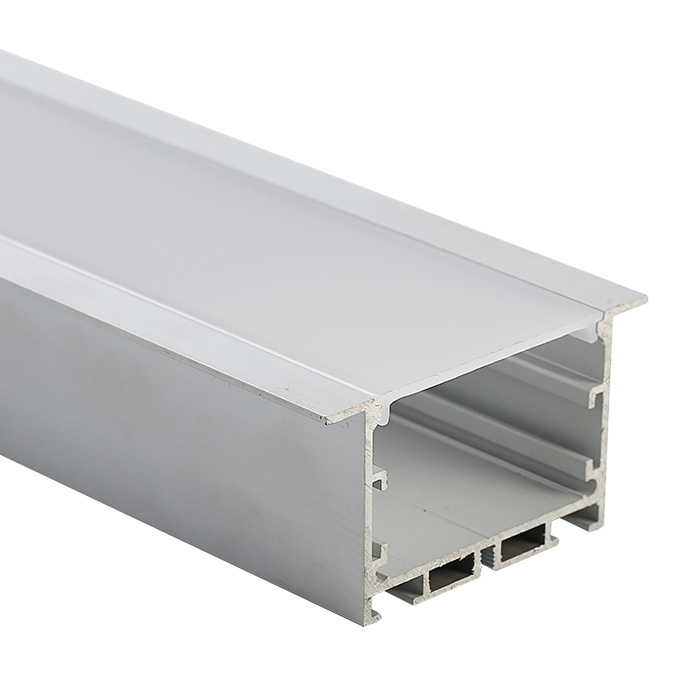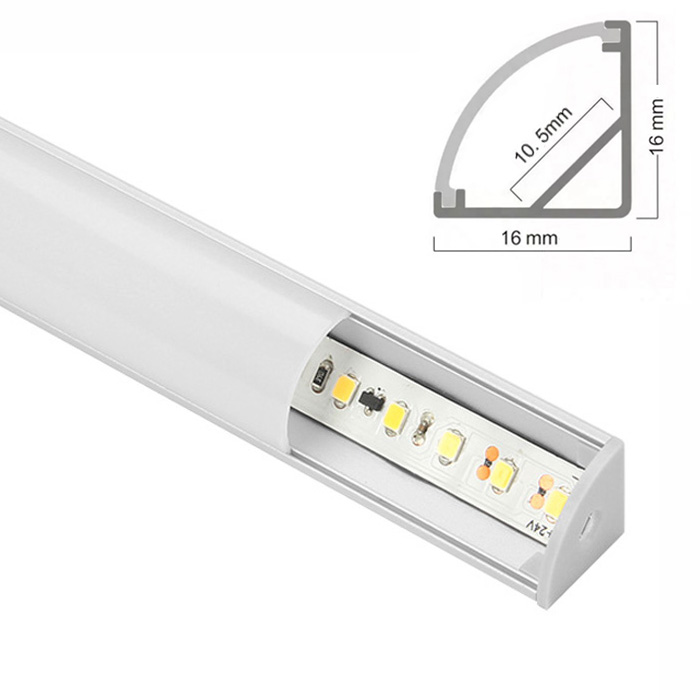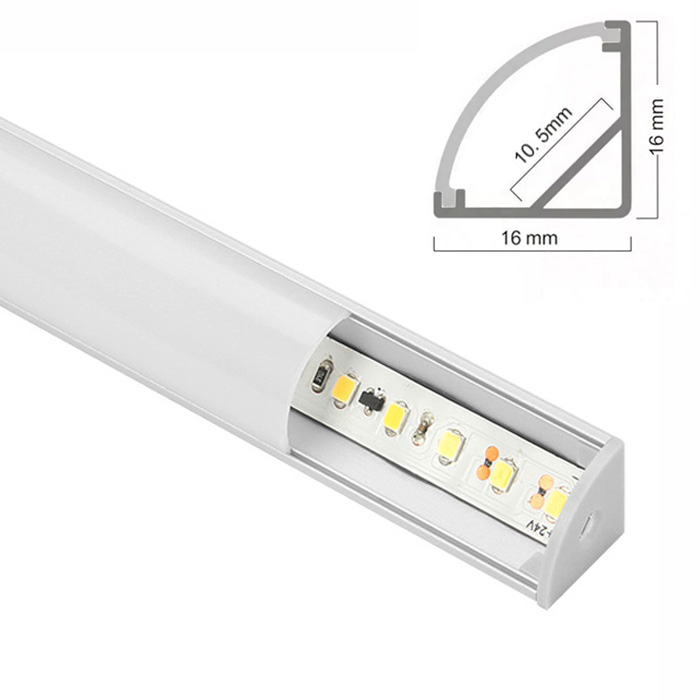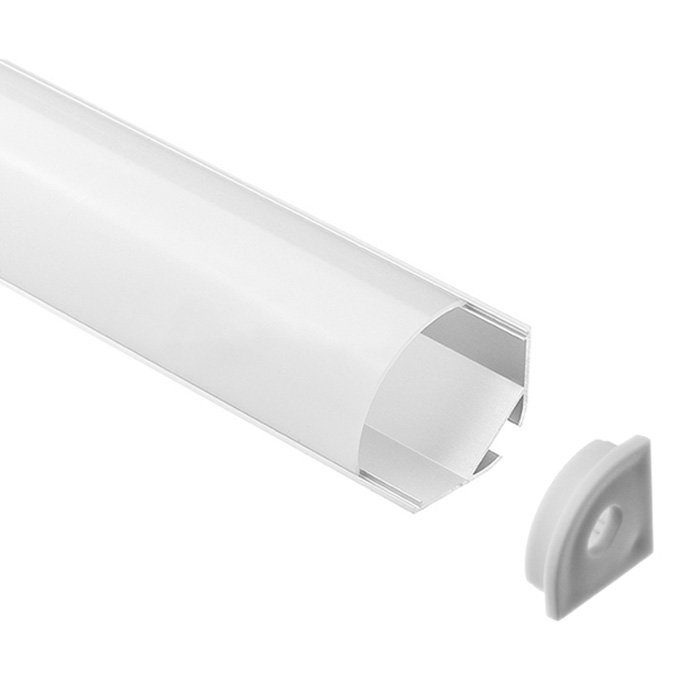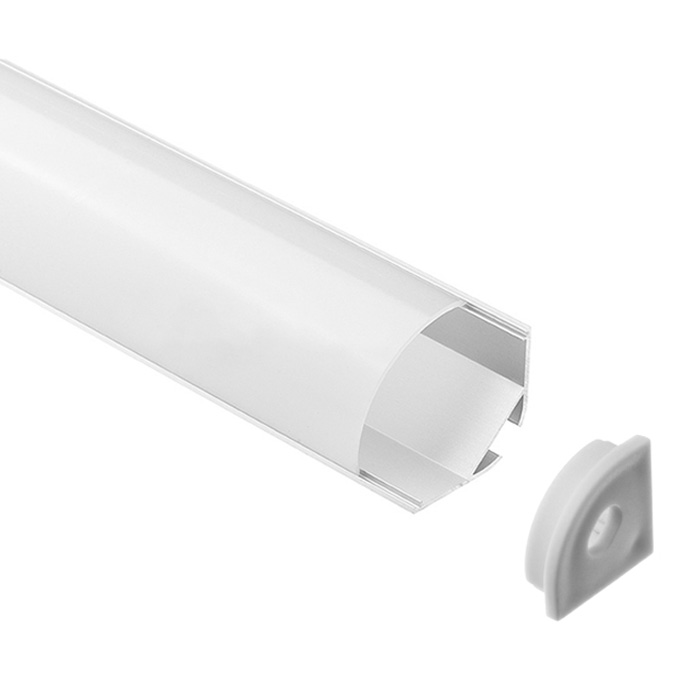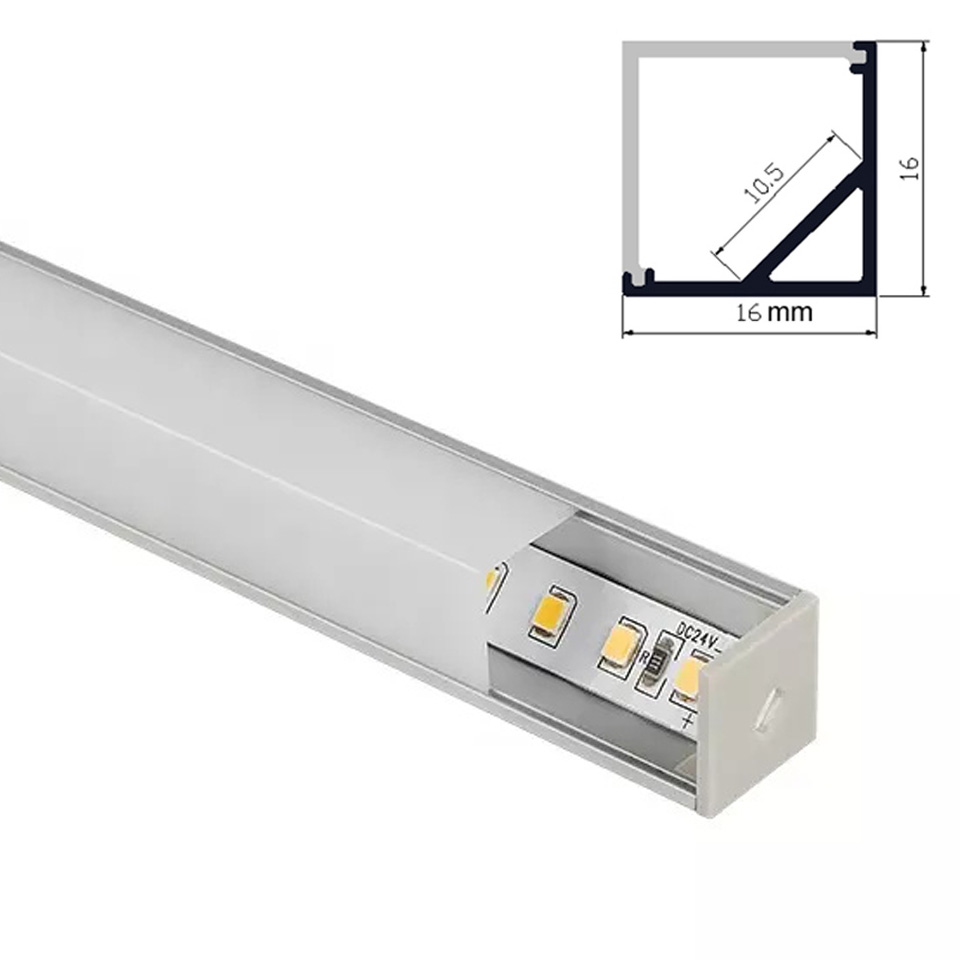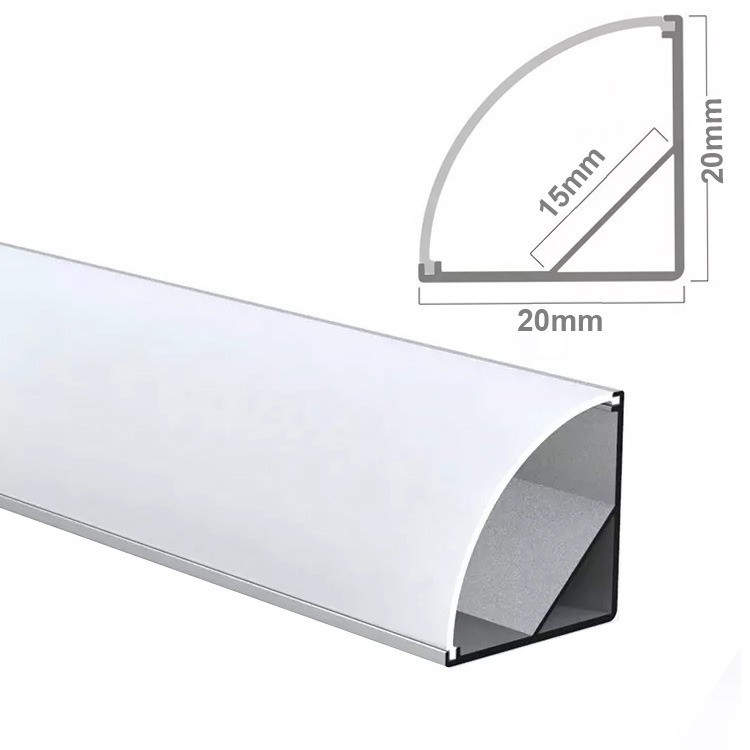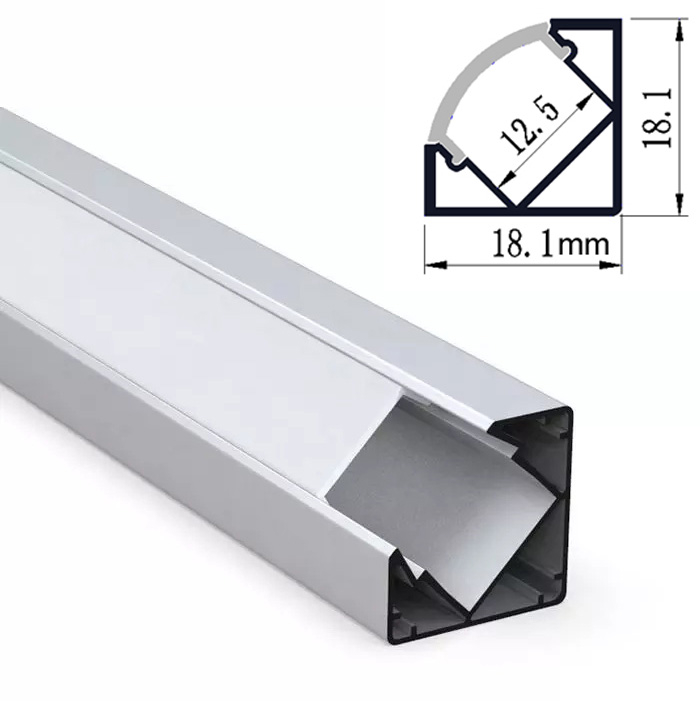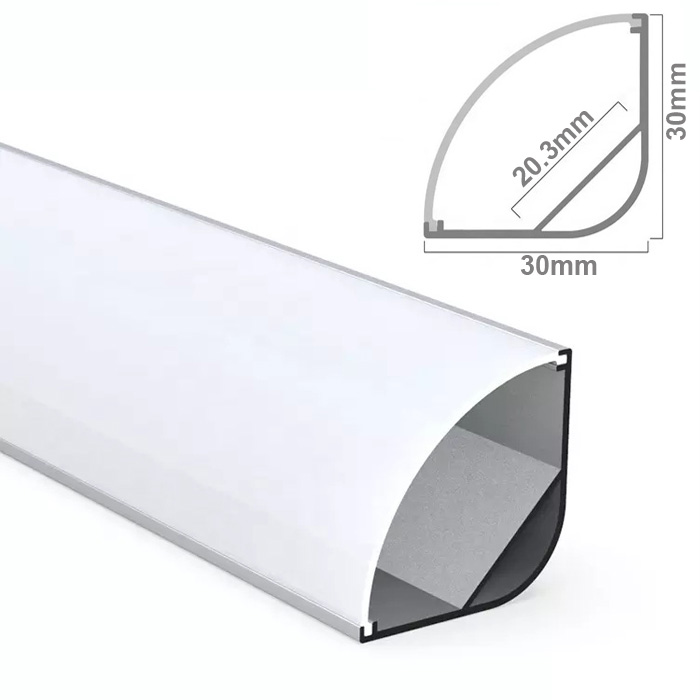LED strip channel buying guide: How to choose LED strip channel aluminum channel for led strip lights
More and more light experts and home owners buy and choose LED strip channels as a necessary component for their strip light design and installation. This coincides with the rapid growth of utilizing LED strip lights in architectural, commercial and residential lighting projects. Using LED light strip channel can not only boost light aesthetic by offering a stylish and finished look in appearance, but also improve the function of light diffusion for LED strip lighting. There are many options on the market for LED strip channels (also called as LED aluminum channels, LED light strip diffuser, LED light channels). As there is no clear instruction or manual, choosing the right LED aluminum channels can be a rather challenging task. We have created this guide for lighting experts and newcomers alike. Get to know LED strip channel.Typically, LED strip channel includes channel body, light diffuser, end caps, and mounting brackets. The channel body is made of anodized aluminum. Light diffuser is made of PC or PMMA. End caps and mounting brackets can be made of PC or metal. 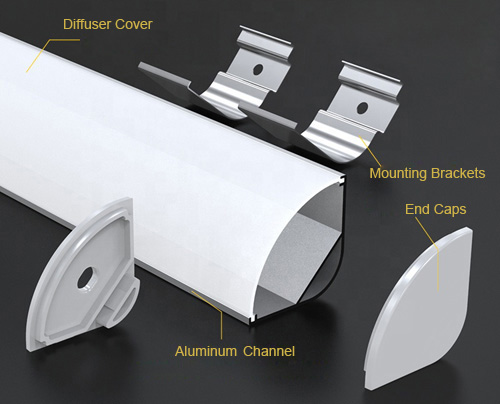 Top 7 things you need to know before choosing LED strip channel1. How LED strip channel affects light diffusion.One of the major purposes of buying and using LED light strip channel is for better light diffusion, or for dotless lighting. As you look at it directly, you can see the lighting dots that come with LED strip lights. We'll look at the factors that contribute to achieving dotless strip lighting, help you choose and buy the right LED strip mounting channels. 1.1 LED strip diffuser - LED strip channel cover.The major effect of light diffusion comes from the lens, which is the cover diffuser that often comes with the LED aluminum channel. It is the lens that light passes through, blocking or alleviating the light dots and creating better light diffusion. There are three major options for LED strip channel cover: clear, frosted, and opaque. And their major difference lies in the visible light transmittance. Visible light transmittance (VLT) is expressed as a percentage, a measurement of the amount of light in the visible portion of the spectrum that passes through the LED channel cover. Comparison of Visible light transmittance(VLT)Clear cover is transparent and transmits 85-95% light. Frosted cover is translucent and allows 75-85% light to pass through. Milky white is the most seen opaque cover, which allows only 40-50% of light to go through. We accept customized order for different colors of opaque cover, such as black, rose gold, gold, silver, etc. Visible light transmittance has important impact on different spectrum light. In comparison, white light is usually brighter than colored light like red, green, blue, etc. So choosing diffuser of high VLT is necessary for colored light, such as RGB, RGBW, RGB CCT LED strips. In this sense, clear cover or frosted cover is more suitable for colored light. Different channel covers have different performance on the two properties: light diffusion and VLT. The two properties tend to be change in opposite direction. When one property performs better, the other does worse. Clear cover makes the LED nodes and light dots directly visible, but it allows the highest VLT. Frosted cover diffuses the light to certain degree with high VLT. Milky white cover provides the best diffusion effect while offering the least VLT. As you can see, it is preferred to have both, better light diffusion and higher VLT. To get the best balance, frosted cover becomes the most popular light diffuser for LED strip channel. 1.2 Combination of the channel height and the LED density of light stripIf better light diffusion is desired, we must also consider two factors: the height of the LED strip channel, and the LED density of LED strips. The higher the channel, the better the light diffusion. Similarly, the higher LED density, the better the light diffusion. The combination of the two factors determines which LED strip channel is the best for the strip light project. As frosted cover offer the best balance of light diffusion and transmittance, we explain in details how to use frosted cover to achieve dotless strip lighting. White LED strips. Most white LED strips have the LED density of 60 LEDs/meter, 128 LEDs/meter, 156 LEDs/meter, 160 LEDs/meter, and 240 LEDs/meter. To achieve dotless lighting, the minimum height of LED channel for each LED strip should be as follow: 60 LEDs/m - LED strip channel height 20.5 mm 120 LEDs/m, 128 LEDs/m - LED strip channel height 12 mm 156 LEDs/m, 160 LEDs/m - LED strip channel height 7 mm 240 LEDs/m, 320 LEDs/m - LED strip channel height 6 mm 60 LEDs/m - LED strip channel height 20.5 mm 84 LEDs/m - LED strip channel height 14.5 mm 120 LEDs/m - LED strip channel height 12 mm 60 LEDs/m - LED strip channel height 20.5 mm 84 LEDs/m - LED strip channel height 14.5 mm RGBCCT LED strips 60 LEDs/m - LED strip channel height 20.5 mm 84 LEDs/m - LED strip channel height 14.5 mm In summary, the lower the LED strip channel, the easier to hide with installation and the bolder the strip lighting. The higher the LED strip channel, the better light diffusion. 2. Inner width of the LED strip channel.2.1 Check the dimensions of the LED channel carefully. Read the part of the inner width specification, make sure it is wider than the LED strip lights.For waterproof LED strip lights, its LED density and the height of the LED strip channel have the same relationship as with non-waterproof LED strip light. One thing worth noting is the width the waterproof LED strip. It is usually 2mm wider than its non-waterproof counterparty due to the outer waterproof material. So read carefully, make sure that the inner width of the LED strip channel is bigger than the width of the waterproof LED strips. 2.2 Solderless LED strip connectors.Soldering is the best connection and won't increase the width of LED strip lights. However, most solderless LED strip connectors are wider than the LED strips. If you need to place the strip connectors inside LED strip channel, it is the width of LED connectors, not the width of LED strip, that determines the inner width of LED strip channel needed. For this reason, please choose the slim connectors for LED strips if you want to use small or slim LED channels. 2.3 The relationship between the inner width of the LED strip channel and the brightness of strip lighting.In addition to the brightness of the LED light strip itself, the brightness also depends on the combination of the LED strip channel and the number of LED strips. Generally speaking, you can choose a high-brightness LED light strip if you need high brightness. If you want the strip lighting brighter, you can choose a wider LED aluminum channel, which can arrange two or more light strips side by side. For example, the model 1707-1.17M has an inner width of 12.5 mm and can hold a 10 mm or 12 mm light strip. If you need the strip lighting brighter, you can consider the model 1023-2M, 2326S-2M, etc., which can place two 10 mm LED strips side by side. These are just some examples, and there are many more models to select from. 3. Choose LED strip channel by its installation method3.1 Surface mounted channel series 3.2 Recessed LED Strip Lighting series ( also known as flush mounted) 3.3 Corner mounted channel series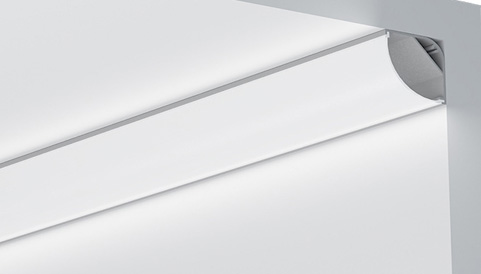 3.4 Pendant mounted channel series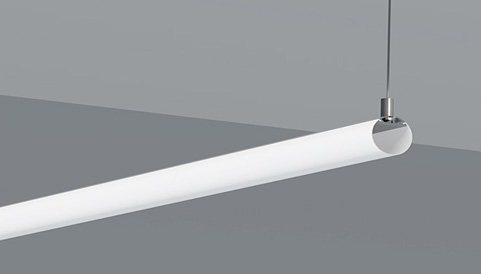 3.5 Ceiling LED strip channel series 4. Choose the appropriate LED channel according to the applicationIf it is for major lighting or task lighting, choose the medium size and large aluminum channel. Large and medium-sized profiles have a larger light-emitting surface, and can place one or multiple light strips side by side, which delivers higher brightness. Kitchen cabinet lighting usually use small sized LED channels, the same for under counter and kitchen island lighting. Choose medium sized or large channels for ceiling LED strip lighting. Stair steps usually use small sized.  Aluminum channels for ceiling LED strip lighting  LED channels for cabinet or closet lighting
5. Length.There are different lengths of aluminum channels on the market. Our LED channels are mainly in 46 inches (1.17 meters), and 78.74 inches (2 meters). They are convenient for DIY. The aluminum channels can be easily cut to adjust the length. They also can be cut 45 degrees and place two of them together as a 90 degree corner turn. You may buy the ones with the length that needs less cutting times according to the needs of the project. It can also be connected longer length by placing next to each other. Note that when cutting aluminum channel, we should consider the minimum cutting length of the LED strip light. This is because the minimum cutting length determines the exact length of the LED strip light to be installed. For example, some LED light strips have a minimum cutting length of one inch or less, while others are two inches or four inches. 6. Aluminum channel accessories.Sometimes you need to consider purchasing additional accessories. The accessories for LED strip channels include end caps and mounting accessories. There are different options for mounting accessories according to different aluminum channels, such as mounting brackets, spring buckles, pedant wires, double-sided tape, screws, or glue. According to different mounting methods, choose different installation accessories. 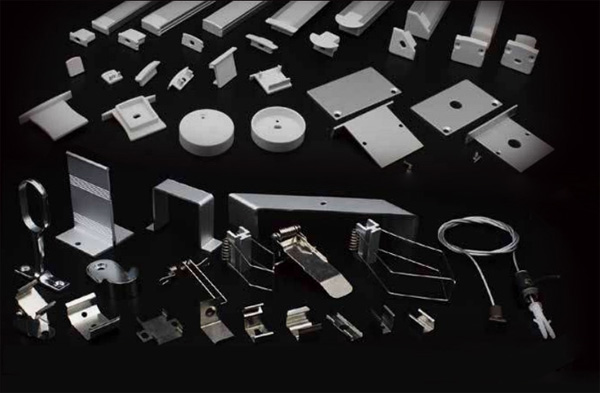 LED channel end caps and mounting accessories Purchase enough end caps and mounting accessories. If you cut one LED channel into several pieces, you may need to buy more end caps and mounting accessories, such as mounting brackets or spring buckles. 7. LED channel can better dissipate heat and provide protection for LED light strips.We all know that aluminum can better dissipate heat. The LED strip channel made of aluminum oxide has this function, prolonging the lifetime of the light strip. It should be noted that the light strip we designed has an operation temperature of -25 to 68 degrees Celsius (-13 to 154 degrees Fahrenheit). If the LED strips work for a long time in a place exceeding 40 degrees Celsius (104 degrees Fahrenheit), it is recommended to use aluminum channels to help dissipate heat. LED channels also protect light strips from UV, dust, scratches, collisions, etc. At last, we offer customized LED strip channels. If you don't find the model you need, such as the shape or the specifications, please contact us. We accept order of custom made LED channels according to your design and application requirements. 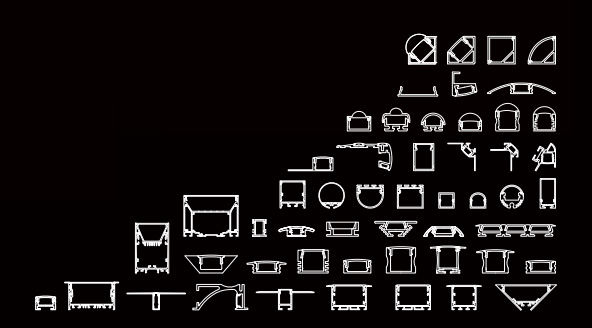 DIY LED Strip DiffuserDIY LED strip diffuser is a very easy task for anybody, from LED strip light professionals to amateurs alike. The LED strip diffuser has two parts, LED aluminum channel and plastic diffuser. Both are easy to be customized to the length that best fits your LED strip light installation. LED strip lights are also easy to cut to any length. All of these make LED strip and diffuser the easy parts for strip lighting DIY users. LED Strip Channel Products
|


